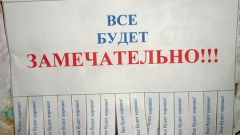What is content analysis?
Content analysis is a scientific method by which collect data in the social Sciences: sociology, psychology, political science and others. It allows you to place textual and graphical information (any content) into mathematical form to Express the quality quantitatively. With this method, the Humanities can conduct research in accordance with the criteria of science. The data obtained in the form of numerical figures are subjected to statistical processing depending on the goals and objectives of the study.
Content analysis in sociology
In social science content-analysis can be used on any sources, the content of which meets the interests of the scientist and his research: print, radio and television media, any documents, advertising, website content, the words of the Respondent, and more.
How is content analysis?
The researcher allocates a semantic unit of the content analysis (words, phrases, text, events, people's names and so on). Selected semantic units to Express the studied subjects. They are necessary in order to indicate what is evident is the object of study, and after counting – what are the features of this manifestation.
Further, when semantic units are selected, the researcher proceeds to their calculation. It evaluates the percentage of how much the interest phenomenon is reflected in the specific media. Thus, the obtained as a result of processing data allows the scientist to make certain conclusions in accordance with the first of the tasks. The results of the content analysis in sociology are often presented in the form of a table that contains the value to examine the selected semantic units. Today there are many computer programs that facilitate the counting of the data in content analysis.
Example of content analysis
A social scientist decided to conduct a study on the subject of homophobia in the print media and to compare the performance of log "N" and log "G". To do this, it allocates a semantic unit, which will reflect the negative sentiment among the authors of articles contained in the journal. The sociologist takes the journals and reads them, highlighting phrases in the articles, like "Conchita Wurst – the Europe rots" or "non-traditional marriage is unacceptable." Selects everything that will meet on the pages of selected publications. In the result the scientist will receive two numbers reflecting the frequency with which such expressions occur in one and other magazine. Thus, he can compare them together and make a conclusion about the manifestation of homophobia in the logs.



